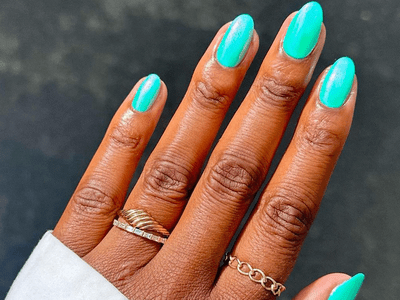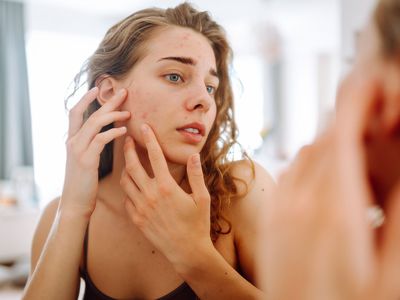
How to Prevent Them The Final Takeaway
While the name “bunny lines” may sound cute, if they’re something that bothers you, then you probably find the reality of them anything but. Simply put, bunny lines are the wrinkles that show up on the sides of your nose when you crinkle it up like, well, a bunny. While they may not often be as talked about as crows’ feet or the “elevens” in between your eyes, they’re similar in that they’re also dynamic wrinkles—those that come from repetitive muscle movement and can become etched in overtime. While you don’t have to do anything about bunny lines (or any other wrinkles), several options do exist if you decide you’d rather minimize their appearance. Ahead, experts share the complete overview on bunny lines, plus the best ways to treat them.
What Are Bunny Lines?
"Bunny lines are the diagonal and/or horizontal wrinkles that appear on the sides of the nose when you scrunch or wrinkle it," explains board-certified physician Carol Eisenstat, MD. When you're younger, you may only see them when you make this type of movement. However, as we lose collagen and elastin overtime, these lines can become both more pronounced and etched in, just like other wrinkles and signs of aging.
Causes of Bunny Lines
The primary cause of bunny lines is repetitive muscle movement, specifically of the nasalis muscle, which runs along the sides of the nose, Eisenstat explains. However, it's worth mentioning that, unlike something like frowning (which is more of a universal movement), not everyone makes the type of facial animations where the nose gets scrunched, notes board-certified plastic surgeon Usha Rajagopal, MD. In other words, not necessarily everyone develops bunny lines and they're not quite as common as other types of dynamic wrinkles. She also adds that many people don't notice bunny lines until they've treated wrinkles elsewhere on their face—these lines can appear more prominent after minimizing the appearance of others simply because they're the only ones remaining.
Just like with any kind of wrinkles, genetics can also play a role in the formation of bunny lines—some people may be more genetically predisposed to developing them than others, Eisenstat notes. She adds that lifestyle factors that generally impact the quality of your skin—like sun exposure, smoking, and overall skincare habits—can also influence the severity of these lines.
How to Treat Bunny Lines
Both experts we spoke with agree that neuromodulator injections (Botox, Dysport, etc.) are by far your best bet. “These are used to relax the nasalis muscles, reducing the appearance of bunny lines,” Eisenstat says. When the muscle is relaxed, it can’t make that movement, so you won’t get the lines (and they’ll be less visible if you already have them). She adds that it’s injected into the sides of the nose, and that while the exact amount used depends on your particular needs, it’s usually a fairly small amount, around two to four units. (For context, anywhere from 22 to 24 units are used on average to treat the area in between the brows, according to Rajagopal.)
A small amount of injectable filler is another option. “This will plump up the lines so that they’re not as visible,” Rajagopal says, adding that it’s a good choice if they’re already etched in and showing up even when your face is at rest. Thinner fillers—Restylane Refyne, Juvederm Volbella—work best here, and only a very tiny amount is needed. To that point, fillers for bunny lines are usually more of an add-on treatment if you’re already having more filler injected elsewhere in your face and have a bit left over, she notes.
How to Prevent Bunny Lines
While bunny lines are often genetic and/or come from natural facial expressions, there are a few adjustments you can make if you're looking to prevent their formation or don't want them to become more apparent. Our experts' top tips are as follows:
- Be conscious of your facial movements: It’s (obviously) easier said than done, but being mindful of repetitive facial movements that exacerbate bunny lines, like scrunching your nose, can help with preventing their formation or increased prominence, Eisenstat says.
- Be mindful after Botox: Rajagopal adds that being mindful of how you move your face after getting Botox injections in your “11 lines” is also important. If you’re still subconsciously tying to frown and end up using other muscles (like those around the nose) in order to do so, this can in turn lead to bunny lines.
- Build a good skincare routine: Otherwise, practicing good skincare is your best bet, as per usual. That means using retinoids to boost collagen production and applying sunscreen daily to safeguard your skin from UV damage, Eisenstat advises. While these steps may not entirely prevent bunny lines, this smart, universally applicable skincare advice will only help improve the overall quality of your skin.
The Final Takeaway
Bunny lines are yet another common type of wrinkles associated with facial expressions over time that you may find on the sides of your nose. While they're normal and you don't have to do anything about them unless they bother you, if you find your bunny lines to be less than cute, injectables like Botox and filler can be helpful treatment options. You also can use skincare and be mindful of your muscle movements if you're looking to prevent the formation or increase of these lines, and this may have tangential benefits for your overall skin health and anti-aging efforts, as well.
See More from Byrdie Shopping

8 Summer 2024 Nail Polish Colors You'll See Everywhere This Season

Hailey Bieber’s Sexy Sheer Top Is Maternity Style Goals, and I Found 7 Lookalikes

Pimples: How Long Do They Last and How Do They Form?


